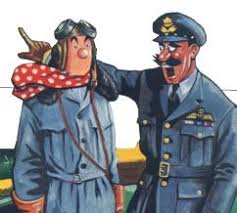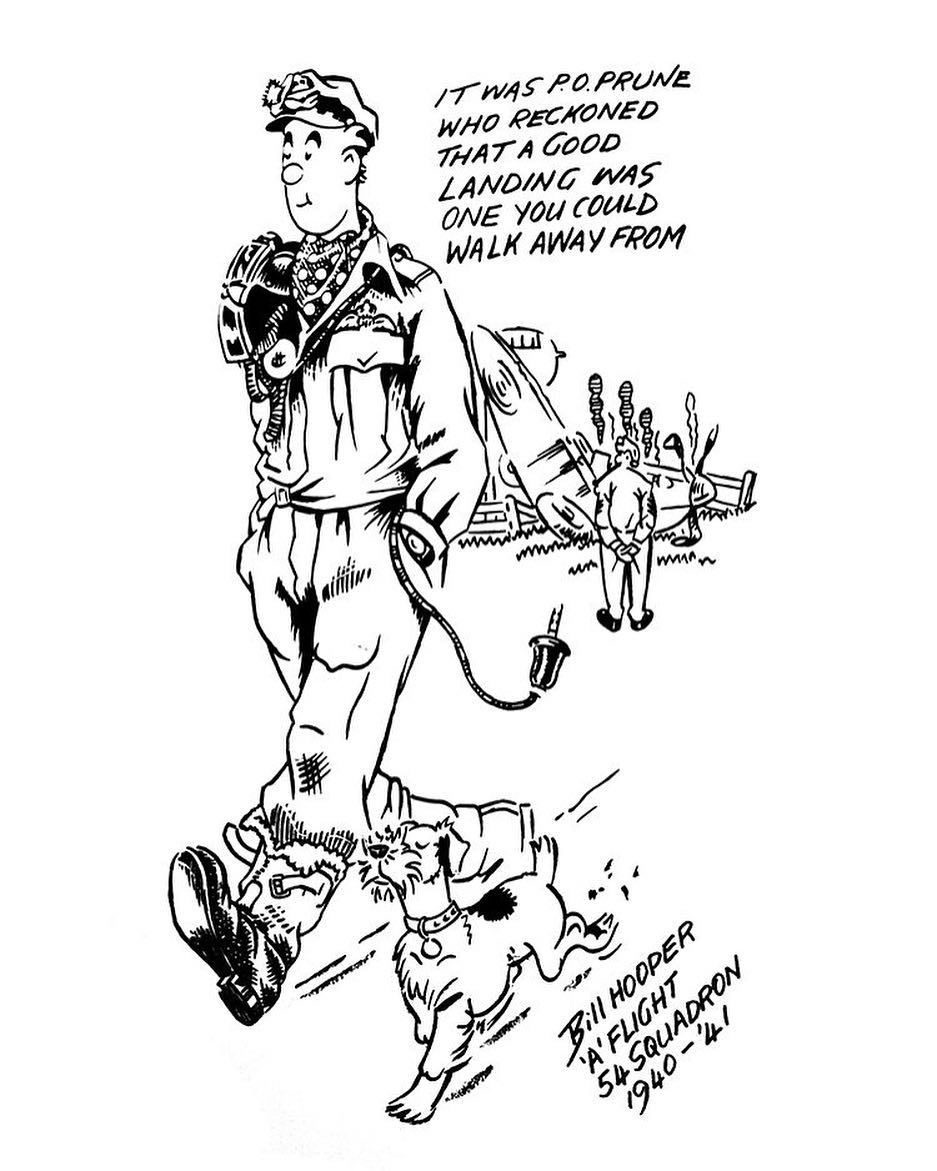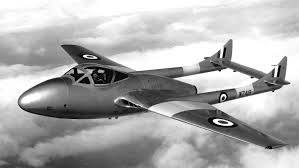|
Christchurch and District Model Flying Club |
|
|
|
|
I Learnt About Flying From That by Jon Goddard
In early 1964 I was undertaking Advanced Flying Training on the Vampire T11 at RAF Linton on Ouse. One of the exercises was a solo land away navigation exercise which I carried out on 6th May. The route was Linton on Ouse (near York), Ashington, Kendal and land at RAF Syerston (near Newark) all at high altitude. After refuelling the route was RAF Syerston, RAF Oakington (near Cambridge), RAF Shawbury (near Shrewsbury), and a long north leg to base again at high altitude. It was a morning take off with a cloud base of about 1,000 ft. The meteorological situation was that we were in a warm sector of a depression which was heading southwards. After take off I was a bit surprised to find that I could not reach the top of cloud at the planned altitude of 30,000 ft. The Vampire had no on board nav aids – strictly not true as we had a useless aid called Rebecca Mk 8. The only ways of navigating were by eyeball or calling for True Bearings from various airfields. Now the second problem was that we only had VHF radios which were pre-programmed on the ground before take off. The rest of the RAF were using UHF and so when you called a station you could expect quite a delay whilst the WAAF Air Traffic Assistant in the tower who was monitoring VHF went the controller and got him or her to change to VHF. The net result was that often you did not get a reply. The third problem was that if you did get a True Bearing you had to guess the line on your map whilst trying to fly instruments. On this occasion no one was replying to my calls but this wasn’t that unusual so the rule was fly the flight plan. I reached the planned top of descent about 30 miles from Syerston and started letting down and at about 15,000ft I popped out of the warm front into gin clear conditions and rather surprisingly reasonably on track. I knew the area as I had spent the previous year doing my Basic Flying Training on the Jet Provost at RAF Syerston. As I emerged from the cloud the radio suddenly started working again. I landed and taxied in to the flight line and asked to be refuelled. One of the line techies said we hear you were having radio problems would you like us to have a look at it. No says I it’s working now so best to leave it alone. I had lunch in the mess and after a chat with some of my old instructors went to the tower to check on the weather. The local controller was a friend. She was the only controller I could always understand on the radio unlike her male colleagues who tended to gabble. After a chat I asked if I could do a low overshoot on departure. This was short hand for a beat up. After take-off I whizzed round the circuit at full throttle and managed to get to 455 knots at about 300ft as I passed the tower. I pulled up and had a rush of blood to the head and wacked the aircraft into a twinkle roll where upon I entered the cloud at 1,000ft inverted and doing an awful lot more knots than you wanted to be at in that position. What I had failed to take on board was the Warm Front which was heading south had arrived whilst I had been chatting. Fortunately, I managed to sort out the cock-up I had got myself into and climbed back to 30,000 ft en route to Oakington. Guess what, no-one was talking to me again! Never mind just fly the flight plan. The problem was that over the next 30 minutes I had time to think about my situation. At the end of the trip I had to let down into the Vale of York with a forecast cloud base of 700ft. We had a rule that you could only let down to Safety Height in these circumstances which was the highest ground within 15 miles plus 1,500ft. which was probably a minimum descent height of about 2,500ft. That wasn’t going to work if the radio stayed broken. Now the procedure was that you could fly a one minute leg triangle continuously and hope that the radar system picked you up and they scrambled a Lightning or Javelin to come and find you and shepherd you down. There were two problems with this; the Vampire only had an endurance of about 75 minutes and I had been airborne for about 40 minutes and how was the scrambled fighter going to find me in thick cloud. This doesn’t even consider the speed differences of a Vampire versus the Lightning. The only other option was to fly the flight plan and if no contact at Safety Height climb back up, head east and eject over the North Sea. I really didn’t fancy that option at all as if my radio was u/s no-one would know where I was. I think I started sweating at this point and tried praying – I am not religious so I don’t think that was going to do any good. I did fly the flight plan and the radio started working again on the let down. Linton on Ouse did not have a GCA but a system called ACR7 with which they could tell you what heading to fly but only advise you at what height you should be. This meant that my Break Off Height would be 700 ft. In the end the cloud base had dropped to 250 ft. but no way was I overshooting at 700 ft. Not unreasonably I put the aircraft u/s and did something that made me very unpopular – I made the statement a Red Line Entry which meant that the aircraft could not be flown until a fault had been found (and I think I had to agree to it being flown as well). After 10 days of fault finding and changing lots of radio boxes they found the problem. A connector had come unscrewed slightly and as the aircraft pressurised the bulkhead it was attached to moved and disconnected. It turned out that everyone could hear my transmissions but I was not receiving any replies. I do hope I didn’t sound too panicky! I think I should have stayed in bed that day. So, what did I learn about flying that day? Firstly that if you follow the rules you will probably survive, secondly swanning about with a shiny new set of wings on your chest does not make you a good aviator and thirdly listen to the briefing. I was lucky to get away with the highly illegal twinkle roll let alone a very high speed beat up. Thank goodness the RAF had taught me how to fly the aircraft well when I put my mind to it. On a personal note I discovered that I didn’t panic in a rather dodgy situation. |
|
Do you remember Pilot Officer Prune and Wing Commander Spry and “I learnt about flying from that” in Air Clues? It still exists, and you can see a pdf of the current Air Clues, with Wg Cdr Spry’s comments on various excursions and excitements by the traditional Google method - Ed |
 |
 |
||
|
[Home] [Chairman's Chatter] [Flying] [First Flights] [Coke bottle] [Longham] [Spitfire?] [Wish for] [Sea Fury] [Explorer] [Sprog] [Lost and Found] [Past blast] [Tailpiece] |
